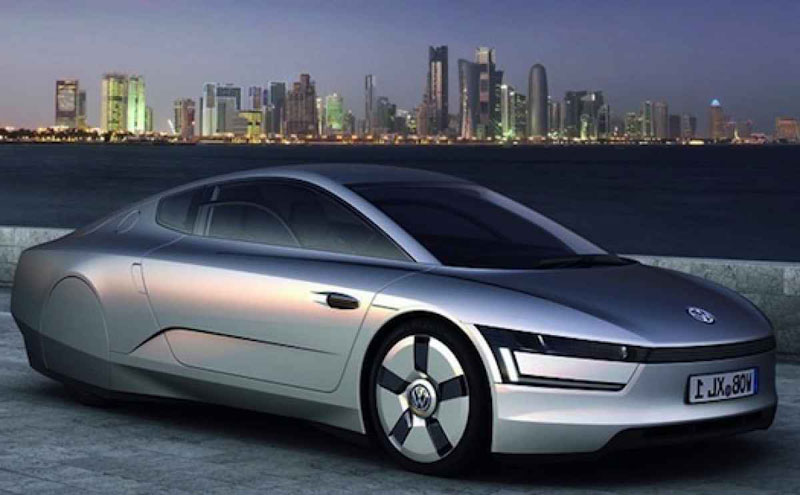This is what a team of engineers can do when challenged to push the limits of fuel efficiency and technology. You may have already heard of VWs 1-liter car, but take a closer look. Its a sports-economy concept car produced a few years ago by VW engineers, to answer one big question: could they build a car that consumes less than 3 liters of fuel for every 100 km traveled?
It turns out they could, but they didnt stop there. Instead, VW blew by that goal to create a car that uses only 1 liter of fuel for every 100 km. Thats 285 MPG.
To accomplish such a feat, VWs engineers had to go back to the drawing board and start from scratch. They knew that fuel efficiency depends on aerodynamics and weight, so they created a bullet-shaped, ultra-lightweight (640 lbs) carbon-fiber car powered by a new, completely redesigned diesel engine. To save more weight, they didnt even paint it:
Proper aerodynamics were key to the low fuel consumption. VW engineers knew they needed a small frontal area. This led to its unusually narrow, bullet-shaped body where the passenger sits behind the driver. As well, the car features an aircraft-like canopy, enclosed rear wheels, special flat carbon-fibre front wheel covers, and an aerodynamic underpan. Even the side cooling air inlets only open when the engine needs cooling, and otherwise stay closed. . .the 1-Litre-Car has an amazingly low coefficient of drag of 0.16 (a typical car has a drag coefficient of approximately 0.30 ).
Everything in the car was made out of lightweight carbon-fiber or magnesium, gears were hollowed, and bolts were made from titanium. Like the electric Aptera Typ1 that I wrote about earlier, the VW 1L was designed without side mirrors (too much drag), instead relying on internal video screens to guide the driver. And also like the Aptera, safety was of particular concern:
Despite its small size and light weight, Volkswagen says the 1-Litre-Car is as safe as a GT sports car registered for racing. With the aid of computer crash simulations, the car was designed with built-in crash tubes, pressure sensors for airbag control, and front crumple zones. Its aluminum fuel tank is located in a protected area behind the passengers. As well, the 1-Litre-Car includes ABS and ESP (electronic stability program).
The existence of the VW 1-Liter car suggests the possibility of drastically reducing our vehicle fuel consumption without any major advances in technology. You probably wont ever see the VW 1-Liter on the road, but dont think something like this will never come to the market. Youll see Apteras electric and plug-in hybrids within the next year, and they look like spaceships too.







